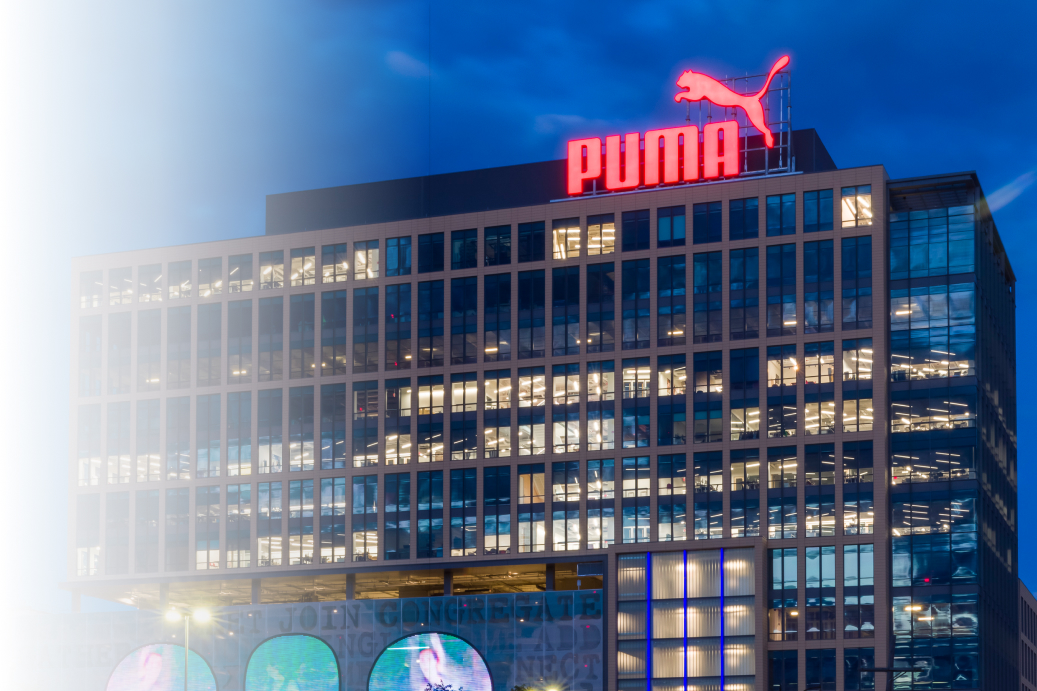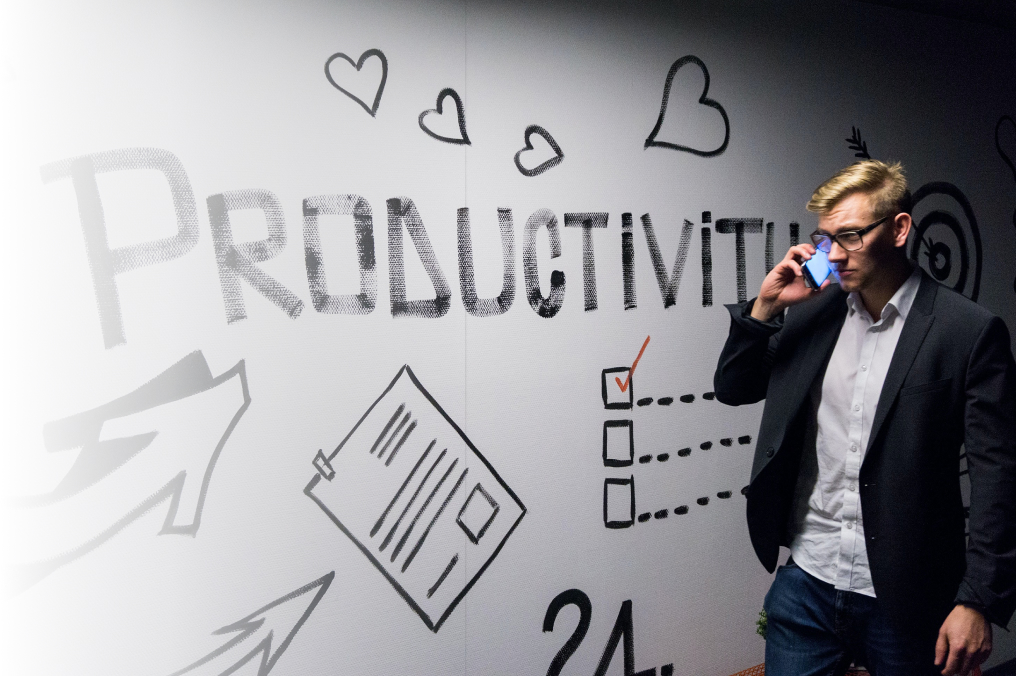The athletic brand double-downs on a single office to fuel recruiting, collaboration and innovation.
While companies all over the globe cautiously rethink their real estate footprint, PUMA North American president Bob Philion is doubling-down on the office.
The athletic brand has been growing fast, thanks to a pandemic-fueled leisurewear market and new athlete ambassadors. And while other companies move carefully when it comes to returning to the office and lean heavily on small satellite offices across the nation, PUMA opened a new 150,000-square-foot headquarters in Somerville, Massachusetts, consolidating its two former offices in nearby Boston and the nearby suburb of Westford.
The intention? Speed recruiting and propel creativity and innovation.
Out of Office talked to Philion to find out more about PUMA’s aggressive bet on the office while many executives are treading cautiously.
OoO: Why open a brand new office right now?
Philion: We made the decision four years ago, prior to COVID, to open our new headquarters and started talking to Gensler about the design of the space. A year later, in 2019, we announced the new office space to our employees and then, of course COVID hit shortly after. The delay as a result of COVID was really only six months, as we moved some employees into the space in August 2021.
We felt like we wanted to bring those two groups from the Westford and Boston offices, the employees, as well as cultures, together for two reasons. One is just to be faster. Our mission is to be the fastest sports company in the industry. A lot of our business is kind of passing the baton, whether it’s from the consumer to the retailer to us in terms of trends, or it’s us coming up with innovations and working through the product and marketing teams to the stores. We can be a lot faster being in one location. Secondly, a lot of what’s driving our business is local relevance, so we felt like having a headquarters here in Somerville, we’d be able to pour more resources that are closer to our market and closer to our customers.
OoO: How will you handle the hybrid workplace?
Philion: Flexibility is certainly key. We’re doing three days in the office and two days remote. We’re also offering flexibility by department so senior leaders can work with their employees to determine what makes sense for their work style. We have a lot of cross-functional work, so our schedule has people coming in and getting the right sightlines across different departments.
The purpose of coming into the office is really that collaboration piece. What we’ve seen through COVID is the ability to continue to keep the business going remotely, and a lot of companies were pleasantly surprised with their ability to do that from afar.
With that said, creativity, collaboration, and vision are better in a collaborative environment. Our employees are coming in for the functions and the team building, but a lot of it is just collaboration and what we call the collisions in the building. Zoom and Microsoft Teams have a lot of 30 minutes to one hour meetings. But, we were missing the five to 10-minute collisions that happen just on a normal basis in the office. I’ve liked what I’ve seen in the last couple of months in terms of getting back to that collision time.
OoO: How did your office design change because of COVID-19?
Philion: We adapted to what was happening, not just with our employees, but also to the CDC guidelines. We included things like partitions, thinking about spacing in the office, furniture choices, even touchless fixtures and soap dispensers. We stepped up on the technology side as well with advanced audio visual equipment in our meeting rooms and conference rooms. Because of our hybrid model, and the fact that at any given time, some employees may be remote, while others are in-person, or traveling to meetings around the globe, the right technology to seamlessly connect was key.
We’ve shifted our need for offices and now use what we call huddle rooms, four- to six-people meeting rooms. With that said, our office design is overall very open. There’s a lot of collaboration happening. The people are visible, and you’re not putting yourself in an office and just going about your day.
That’s important to us. We definitely felt like we were missing those collision points. The biggest thing for me was you start living your life on 30 to 60 minute cycles and you get into a crazy day with Teams or Zoom, and I think then you’re missing that energy in the collaboration. They’re just pretty much task days, which again, is good for keeping the machine running. But I don’t feel like it’s the best way to work in terms of a creative mission.
OoO: Younger generations of workers, specifically Gen Z, are the most eager to work in an office. How did you design your office to be a recruiting tool?
Philion: I’m excited about it from a talent perspective. We have 50 open positions and we’ve got a lot of good momentum in our business and industry. Certainly this new headquarters is a great way to recruit.
We tried to lay the building out in a very good, open and collaborative way. We’ve offered flexibility by department so some have more workstations in a collaborative layout, open seating, soft seating, couches, different kinds of brainstorming workspaces. There are ROOM phone booths when someone needs some quiet time.
We’ve got a 19,000-square-foot roof deck with a dining area and art installations. Employees get access to an on-location kids room for children visiting the office, bike storage, a 2,300-square-foot balcony and close proximity to Assembly Row, which has dining, shopping and health and wellness benefits. It’s located on 52 acres, the former home of a Ford assembly plant.
Our state-of-the-art gym is connected to an outdoor roof deck to get outside for a little fitness and has great equipment thanks to our recent partnerships with several Peloton instructors. The 48 Cafe serves as our gathering place for employees for food and beverage as well as just a kind of a fun and cool place to work. We also have an authentic German beer garden coming in the spring on the 13th floor, which houses our deck that overlooks the city.
OoO: What else do you find important about the office?
Philion: Somerville is interesting. Why just north of the city of Boston? We’ve got 450 employees here. About 150 are coming from downtown, and about 300 are coming from our former office out in Westford. Our center of gravity was just north of the city and so, Somerville is saving many employees commute time into the city, which could be 20 to 25 minutes one way. We just fell in love with Assembly Row. There’s a lot of creative energy and amenities for employees.
From a space perspective, we really like where we are. Gensler was an amazing partner from a design perspective, same with Timberline Construction. Cushman and Wakefield really laid the project management side of it as well. Those are great partners and certainly we couldn’t do it without them.
At the end of the day, we’re a product marketing company, and we still have tangible things like sneakers and apparel. Before COVID, it was having an office that kind of houses the work, and now, we have an office that’s really used as a tool for that creative energy and collaboration.


